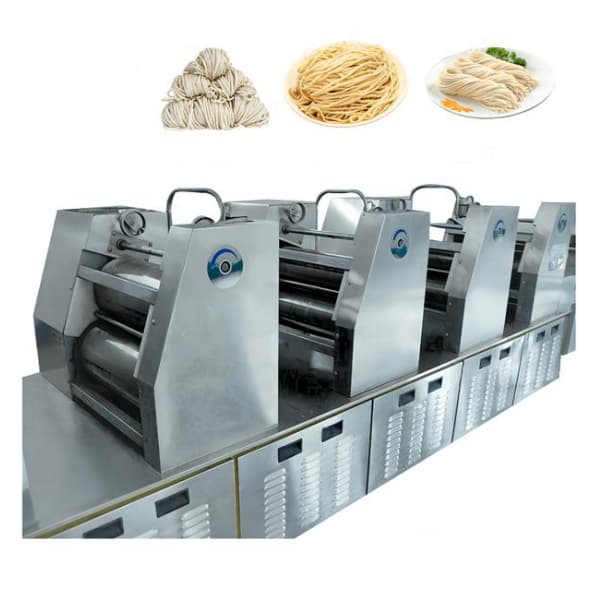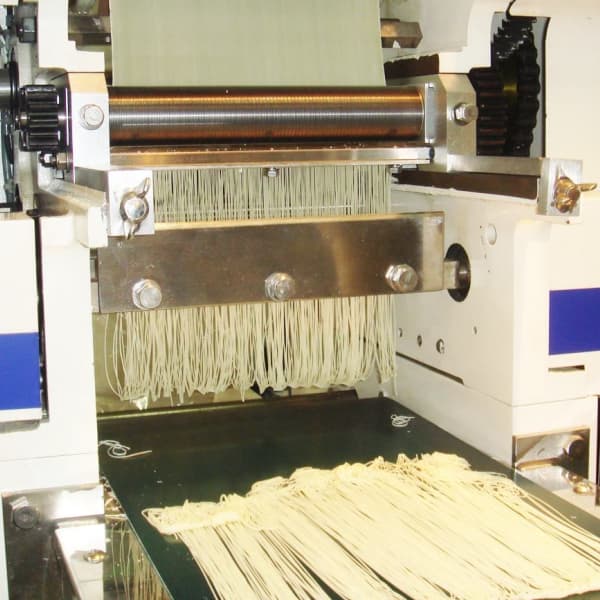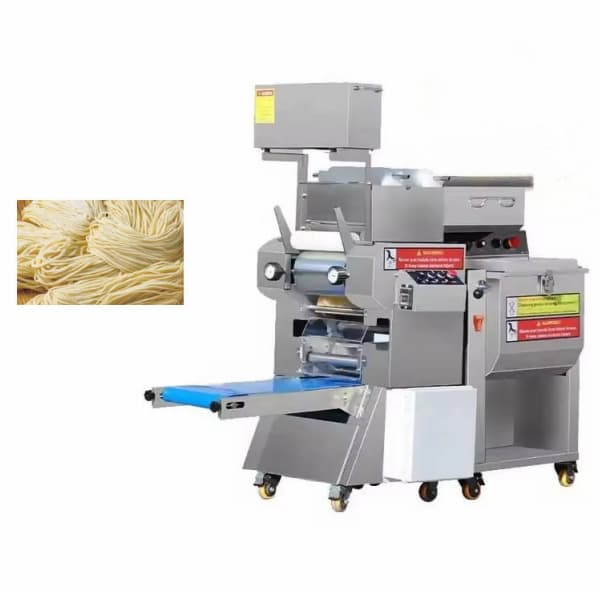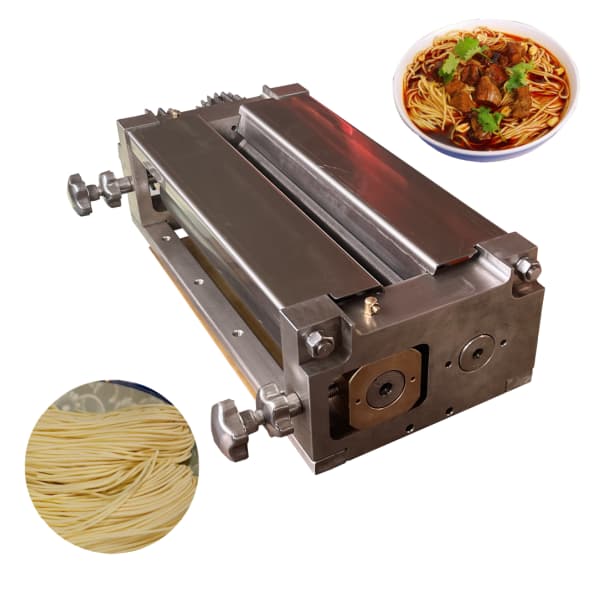Introdução
Macarrão ramen transcendeu seus humildes começos para se tornar um prato global icônico. Com uma rica história enraizada nas tradições culinárias chinesas e refinada pela inovação japonesa, Ramen hoje não é apenas comida - é uma experiência cultural. À medida que o ramen continua a ganhar popularidade em todo o mundo, Compreender as classificações principais que definem suas variações se torna essencial para os chefs, Fabricantes de alimentos, e entusiastas.
Este guia abrangente explora o Classificação de macarrão ramen com base em três critérios principais: ingredientes, forma, e hidratação. Esses três fatores influenciam tudo, desde o comportamento de cozimento até a sensação da boca e a absorção de sabor. Este artigo fornece informações valiosas para profissionais de culinária e aficionados por ramen.

1. Classificação por ingredientes
1.1 Ingredientes do núcleo
Noodles ramen normalmente consistem em quatro ingredientes primários:
- Farinha de trigo: A base do ramen tradicional, alto em conteúdo de glúten para fornecer estrutura e mastigação.
- Água: Hidrata a massa e facilita a formação de glúten.
- Sal: Aprimora o sabor e fortalece a rede de glúten.
- Kansui (Água alcalina): Uma mistura de carbonato de sódio e carbonato de potássio, Kansui dá ao ramen sua cor amarela e firme distinta, textura elástica.
1.2 Papel de Kansui
Kansui é o que diferencia o ramen de outros tipos de macarrão. Aumenta o nível de pH da massa, que fortalece a estrutura do glúten e reduz a gelatinização de amido durante o cozimento. Isso resulta em uma empresa, macarrão resiliente que resiste a ficar encharcado em caldo quente.
1.3 Farinhas alternativas
A produção moderna de ramen evoluiu para incluir vários tipos de farinha, permitindo dietas especializadas e texturas únicas:
- Farinha de trigo integral: Adiciona um sabor de noz e maior teor de fibra.
- Farinha de arroz: Ideal para macarrão sem glúten, embora produza uma textura mais suave.
- Farinha do trigo sarraceno: Frequentemente usado em misturas, trazendo um mais rico, sabor mais terreno.
- Amido de batata ou tapioca: Melhora a mastigência e a transparência.
1.4 Aditivos e enriquecimentos
- Ovos: Fornecer riqueza, cor, e proteína adicional.
- Extratos vegetais: Como espinafre, cenoura, ou beterraba para cor e nutrientes.
- Conservantes: Comum em macarrão instantâneo para prolongar a vida útil.

2. Classificação por forma
A forma do macarrão ramen desempenha um papel crítico na maneira como interage com caldo e coberturas. A forma de macarrão afeta o tempo de cozimento, Experiência de crise, e até mesmo absorção de sabor.
2.1 Reto vs.. Encaracolado
- Macarrão reto: Normalmente fino e firme, Macarrão reto é ideal para caldos leves como Shio ou Tonkotsu, enquanto eles mantêm sua forma e permitem uma sujeira suave.
- Macarrão encaracolado: Mais comum em miso ou shoyu ramen. Sua textura ondulada captura caldo e melhora o sabor a cada mordida.
2.2 Classificações de espessura
Os fabricantes de macarrão japonês classificam a largura do macarrão usando números de cortadores:
- #26 para #24 (Afinar): Usado em tonkotsu ramen no estilo de hack.
- #22 para #20 (Médio): Versátil e comum em Shoyu e Shio Ramen.
- #16 para #10 (Espesso): Melhor para miso ramen ou tsukemen, oferecendo um ousado, textura em borracha.
2.3 Borda e seção transversal
- Macarrão redondo: Textura mais suave, frequentemente encontrado em caldos mais leves.
- Macarrão quadrado: Mordida mais firme e superfície mais áspera, bom para molhos mais pesados.
- Macarrão plano: Mais área de superfície para captura de caldo, ideal em variantes regionais.
3. Classificação por nível de hidratação
Nível de hidratação, ou “Suibun-Ryo” em japonês, refere -se à porcentagem de água na massa de macarrão em relação ao peso da farinha. É um fator crítico que determina a textura, elasticidade, e tempo de cozimento.
3.1 Macarrão de baixa hidratação (≤30%)
- Textura: Empresa, denso, resistente a cozinhar demais.
- Caso de uso: Comum em ramen em estilo Hakata e macarrão instantâneo.
- Características: Longa vida útil, Slurp mais curto, alta resistência em caldo.
3.2 Macarrão de hidratação média (30–38%)
- Textura: Firmeza equilibrada com leve mastigação.
- Caso de uso: Adequado para Shoyu e Shio Ramen.
- Características: Absorção ideal de caldo, mantém a integridade.
3.3 Macarrão de alta hidratação (≥38%)
- Textura: Macio, elástico, lustroso.
- Caso de uso: Ideal para tsukemen e hiyashi chuka (macarrão frio).
- Características: Delicado em caldo quente, Melhor servido al dente.
3.4 Influência da hidratação no tempo de cozimento
| Nível de hidratação | Tempo de cozimento | Textura | Uso comum |
|---|---|---|---|
| ≤30% | 4–5 minutos | Empresa, Snappy | Tonkotsu Ramen |
| 30–38% | 2.5–3,5 minutos | Equilibrado | Shoyu/Shio Ramen |
| ≥38% | 1.5–2,5 minutos | Macio, escorregadio | Tsukemen, pratos frios |
4. Tabela de classificação transversal
| Estilo | Ingredientes | Forma | Hidratação | Prato ideal |
| Para começar | Trigo de alto glúten, Kansui | Direto, afinar (#26) | Baixo | Tonkotsu Ramen |
| Tóquio | Trigo + ovo | Encaracolado, médio (#22) | Médio | Shoyu Ramen |
| Tsukemen | Trigo + ovo + amido | Espesso, plano (#12) | Alto | Macarrão mergulhado |
| Sapporo | Trigo, Kansui | Ondulado, de espessura média | Médio | Miso ramen |
| Não contém gluten | Farinha de arroz, Sem kansui | Redondo, afinar | Alto | Ramen frio |

5. Técnicas de processamento e seu impacto
5.1 Amassar e descansar
A amasta adequada é essencial para o desenvolvimento de glúten. Descansar a massa permite hidratação para estabilizar, melhorando a elasticidade.
5.2 Folha rolando e dobrável
A maioria dos macarrão comercial ramen é abatida e dobrada várias vezes antes de ser cortada. Este processo de camada cria uma forte rede de glúten, melhorando a textura.
5.3 Cortando e enrolando
O corte é feito com rolos especializados. O ritmo pode ser adicionado após o corte usando agitação mecânica ou injeção de vapor.
5.4 Cozinhando e secando
- Macarrão cru: Requer refrigeração e vida útil curta.
- Macarrão cozido no vapor: Usado em ramen fresco, parcialmente cozido.
- Macarrão frito/seco: Usado em ramen instantâneo; A fritura cria textura porosa para reidratação rápida.
6. Artisanal vs.. Macarrão Ramen Industrial
6.1 Macarrão artesanal
- Feito em pequenos lotes
- Ingredientes de alta qualidade
- Hidratação e modelagem personalizadas
- Direcionado para lojas de ramen especiais
6.2 Macarrão industrial
- Produzido em massa
- Vida útil estável
- Adequado para produtos de ramen instantâneos e congelados
- Qualidade e preços consistentes

7. Inovações no desenvolvimento de macarrão ramen
7.1 Opções sem glúten e com baixo teor de carboidratos
Com preferências alimentares mudando, farinha de arroz, Konjac, e macarrão à base de leguminosas está ganhando tração.
7.2 Macarrão enriquecido com proteínas
A adição de isolados de proteína de soja ou soro de leite aumenta o perfil nutricional para consumidores conscientes da aptidão.
7.3 3D macarrão impresso
Cozinhas experimentais no Japão e na Coréia estão explorando a impressão 3D para macarrão ramen, oferecendo texturas e formas personalizadas.
8. Perguntas frequentes (Perguntas frequentes)
Q1: O que torna o macarrão ramen diferente de outros macarrão?
UM: Kansui e taxas de hidratação específicas os diferenciam, dando ao ramen sua textura e sabor únicos.
Q2: O macarrão ramen pode ser livre de glúten?
UM: Sim, Farinha de arroz ou konjac pode ser usado, Mas textura e sabor diferem do macarrão tradicional à base de trigo.
Q3: Qual é a melhor forma de macarrão para tonkotsu ramen?
UM: Afinar, macarrão reto com baixa hidratação é ideal para emparelhar com ricos, caldo baseado em carne de porco.
Q4: São macarrão de alta hidratação mais saudável?
UM: Não necessariamente. Eles são mais macios e mais rápidos para cozinhar, Mas o valor da saúde depende dos ingredientes usados.
Q5: Por que o macarrão instantâneo do ramen tem um sabor diferente do ramen fresco?
UM: Macarrão instantâneo é frequentemente frito e contém conservantes. Fresh Ramen usa menos aditivos e tem uma textura diferente.
9. Conclusão
O mundo do macarrão ramen é diverso, técnico, e profundamente enraizado na cultura. Ao entender as classificações baseadas em ingredientes, forma, e hidratação, Desbloqueamos os segredos atrás de cada tigela de ramen. Se você é um tecnólogo de alimentos, Para chef, ou um entusiasta do macarrão, Essas classificações servem como plano para criar o macarrão perfeito para todos os tipos de pratos ramen.
Da mordida firme de Hakata Marpão à elegância escorregadia de Tsukemen, Ramen continua a evoluir, Inovação e tradição inspiradoras. Dominar sua classificação não é apenas acadêmico - é essencial para preservar e progredir o legado global do ramen.
